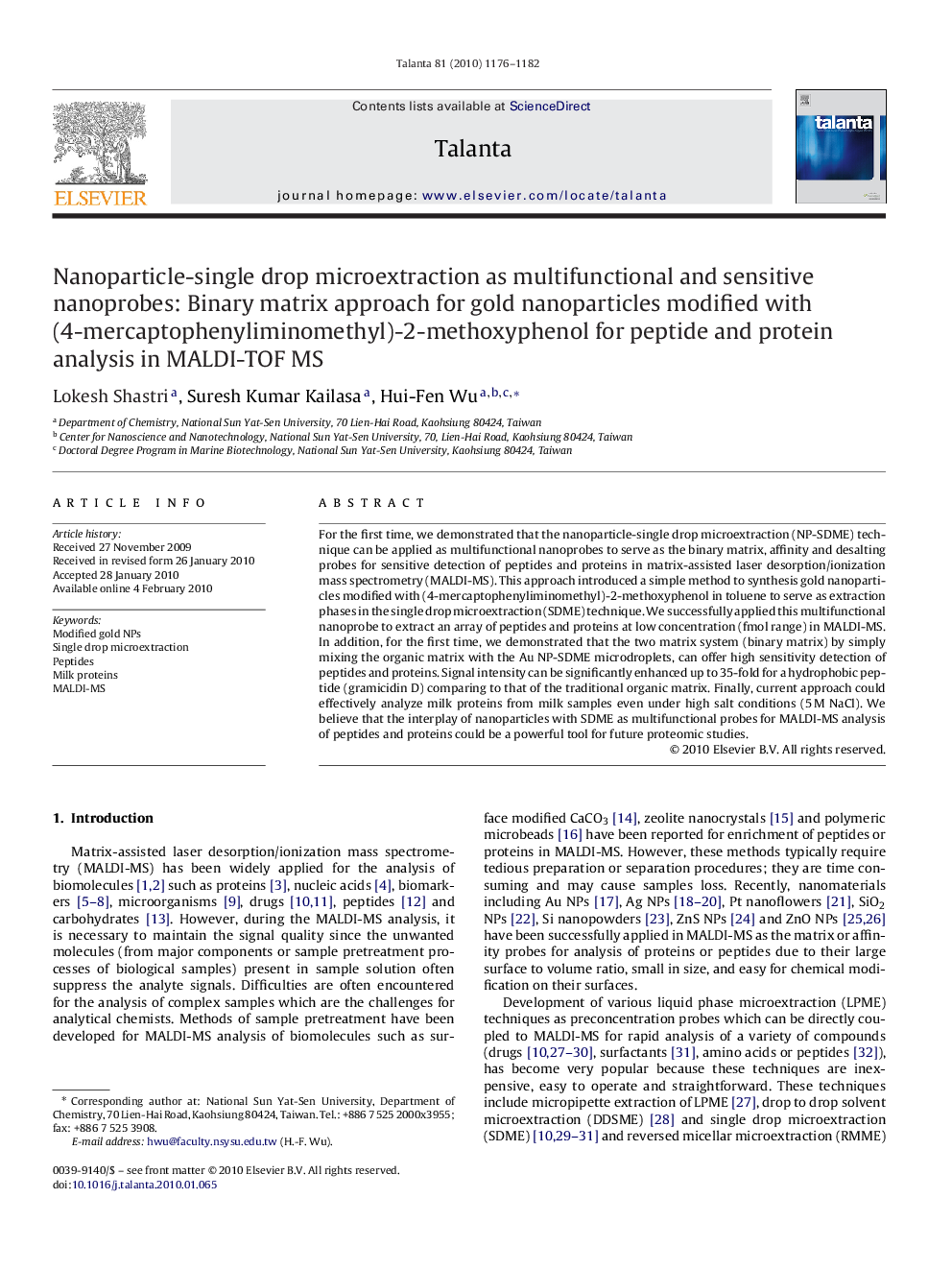| Article ID | Journal | Published Year | Pages | File Type |
|---|---|---|---|---|
| 1242612 | Talanta | 2010 | 7 Pages |
For the first time, we demonstrated that the nanoparticle-single drop microextraction (NP-SDME) technique can be applied as multifunctional nanoprobes to serve as the binary matrix, affinity and desalting probes for sensitive detection of peptides and proteins in matrix-assisted laser desorption/ionization mass spectrometry (MALDI-MS). This approach introduced a simple method to synthesis gold nanoparticles modified with (4-mercaptophenyliminomethyl)-2-methoxyphenol in toluene to serve as extraction phases in the single drop microextraction (SDME) technique. We successfully applied this multifunctional nanoprobe to extract an array of peptides and proteins at low concentration (fmol range) in MALDI-MS. In addition, for the first time, we demonstrated that the two matrix system (binary matrix) by simply mixing the organic matrix with the Au NP-SDME microdroplets, can offer high sensitivity detection of peptides and proteins. Signal intensity can be significantly enhanced up to 35-fold for a hydrophobic peptide (gramicidin D) comparing to that of the traditional organic matrix. Finally, current approach could effectively analyze milk proteins from milk samples even under high salt conditions (5 M NaCl). We believe that the interplay of nanoparticles with SDME as multifunctional probes for MALDI-MS analysis of peptides and proteins could be a powerful tool for future proteomic studies.
